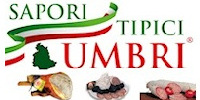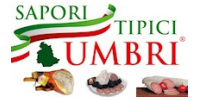Our network:
Tuesday 23 December 2025
Church of San Pietro
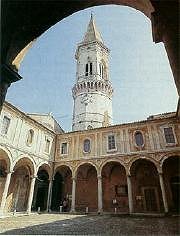 |
| Church of Saint Pietro |
Angry citizens burnt the abbey after Francesco Guidalotti in 1398 plotted against the leader of the People’s Party, after which there followed a period of decline in its fortunes. As demonstrated by the existing buildings and interiors, however, the abbey recovered considerable prosperity under the rule of Pope Eugene IV.
The triple-arched portal at the entrance to the main court reflects Porta di San Pietro, which is visible from here. It was built in 1614 to a design by Valentino Martelli, who had also designed the main cloister and a second foor that was never built.
The minor cloister (or 'delle Stelle'), was instead designed by Galeazzo Alessi in 1571.
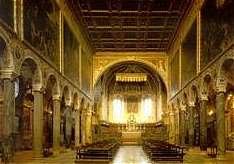 |
| Church of Saint Pietro |
The original Romanesque blind arches on the facade of the church have been restored (see the paintings by Bonfigli in the Galleria Nazionale).
There are also frescoes by local painters from the 14th century, while the portal dates back to the late 15th century.
The interior is a mixture of ancient columns and has a Palaeochristian basilical structure. The Gothic wooden choir is considered to be one of the finest in Italy and was completed between 1525 and 1591). The painted and guilded wooden lacunar ceiling is from 1556, while the large quantity of frescos and paintings by various artists include some by Antonio Vassillacchi (1592-94), Sassoferrato, Guido Reni, Vasari, Guerricino and Perugino (Pietro Vannucci).
The sacristy was added in 1451 and contains inlaid furniture from 1472, as well as what remains of a pavement in Deruta tiles. The frescoes are by Danti and Peccenini. The paintings hanging here are by Perugino, Parmigianino and Raphael. A door in the apse of the wooden choir leeds to a tiny balcony that affords a stunning view over the Valle Umbra as far as Assisi, Monte Subasio, Bettona, Montefalco and the Apennines.
The buildings of the abbey around the two cloisters now house the Agriculture Faculty of the University of Perugia, which also owns the abbey's former properties in Casalina, in the Tiber valley.
Chiesa di San Pietro
Via Borgo XX Giugno [old town centre]
Perugia, 06100
Info: Ph. +39 07534770
Timetable of Holy Mass:
Mon-Tue-Wed-Thu-Fri-Sat: 8am
Sundays and holidays: 8.30am – 11am
APM (Public municipal bus transport authority): stopped bus - Tre Archi, Piazza Partigiani [only 400 meters away]
Linea 4, 6, 7, 9, 10, 11, 12, 13s, 13d, 15, 81, 82, 83, 87, bis28, bis31, bis33, bis34, bis39, bis41, bis44, bis50
Disabled access available
Via Borgo XX Giugno [old town centre]
Perugia, 06100
Info: Ph. +39 07534770
Timetable of Holy Mass:
Mon-Tue-Wed-Thu-Fri-Sat: 8am
Sundays and holidays: 8.30am – 11am
APM (Public municipal bus transport authority): stopped bus - Tre Archi, Piazza Partigiani [only 400 meters away]
Linea 4, 6, 7, 9, 10, 11, 12, 13s, 13d, 15, 81, 82, 83, 87, bis28, bis31, bis33, bis34, bis39, bis41, bis44, bis50
Disabled access available
| Have a comment or question? Send a message to our editors at: contactus@perugiaonline.com |
| Up |

General information
• General travel tips • Weather information
• Tourist guides and visit guided in Umbria
• Local opening times
• Useful - emergency numbers
• Perugia for living
• Hospital Perugia
• Hospital Foligno
• Real Estates and Home Builders
• Homes for sale, property, apartments selling
Transport in town
• Traffic restrictions • Parking
• Buses & Taxis
• Town map
• How to reach Perugia by car
• How to reach Perugia by train
• How to reach Perugia by Air
Transport out of town
• Airport • Trains
• Rent a car
• Local and national buses

Where to Stay
• Hotels Map
OFFERS & LAST MINUTE
Where to eat and drink
• Restaurants and Trattorie • Pizzerie
• Pubs
• Restaurants Map
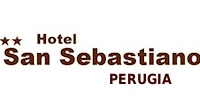
Art and monuments
• Rocca Paolina • Ipogeo dei Volumni
• Etruscan town walls
• Palazzo dei Priori
• Porta Sant' Angelo
• Acqueduct
• Maesta delle Volte
• Collegio della Mercanzia
• Collegio del Cambio
• Fontana Maggiore
Art and religion
• Cathedral of San Lorenzo • Church of San Filippo Neri
• Oratory of San Bernardino
• Church of Sant' Ercolano
• Church of San Domenico
• Church of San Pietro

Museums and galleries
• Historic Museum Perugina • Galleria Nazionale dell'Umbria
• Museo Archeologico
• Palazzo della Penna
• Accademia delle Belle Arti
• Museo di Storia Naturale
• Museo Capitolare San Lorenzo
• Cappella di San Severo
Art and tourist attractions
• Palazzo Capitano del Popolo • Botanical garden
Perugia News
Sorry, non news - i soggetti interessati a far conoscere le iniziative che avranno luogo nell'ambito del territorio comunale sono invitati a darne comunicazione con congruo anticipo utilizzando l'email redazione@umbriaonline.com
Regional News by Category
• MUSIC • EXHIBITIONS • COURSES • COMPETITIONS & PRIZES • FOLKLORE • EVENTS • DANCE & BALLET • MEETING & CONFERENCES • CONGRESS • KIDS • Typical Products FAIRS • THEATRE • SPORT EVENTS • LEISURE • LIFESTYLE • WHERE TO DINNER • NIGHTLIFE • CURIOSITY • VIDEO • BOOKS
What to see & do
• Itineraries & Museums in Umbria • Italian language courses
• The Amusement Park : La Citta della Domenica
• Golfing holidays
• Nature Walks Around Cascia:To Cascia via the Scoglio di Santa Rita, the vast rocky pyramid that dominates the village of Roccaporena
• Cooking courses
• Shopping in Perugia
• Perugia Hotel Tevere
• Assisi Villa Giulia
Lake Trasimeno
• General Information • The islands - boat tours
• Eating well by Lake Trasimene
• Bathing - Lake Trasimene
• Restaurants Map of Trasimeno area
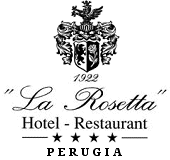
SPECIALS in Umbria - Italy
• Gift Ideas for traveling • Wellness in Umbria - Perugia area
• Weddings in Umbria
• Honeymooning in Umbria
• Charme & Relax in Umbria
• Home in Umbria
Education
• Language schools for Foreigners • Cooking schools
• University for Foreigners Perugia
• Design, Fashion, Visual arts and Communication Schools
• Perugia for Studying
• University
• Italian Army Foreign Language School
• Arts, Music, etc.
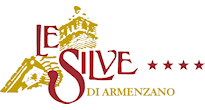
Typical products
• Norcia Ham IGP • Handicraft
• Mushrooms
• Truffles
• Extra Virgin Olive Oil
• Wine
• Meat
Flavours to taste
• Salumi Tipici Italiani online selling • Oleum Evo online selling
• Sapori Tipici Italiani buy now
• From the forest
